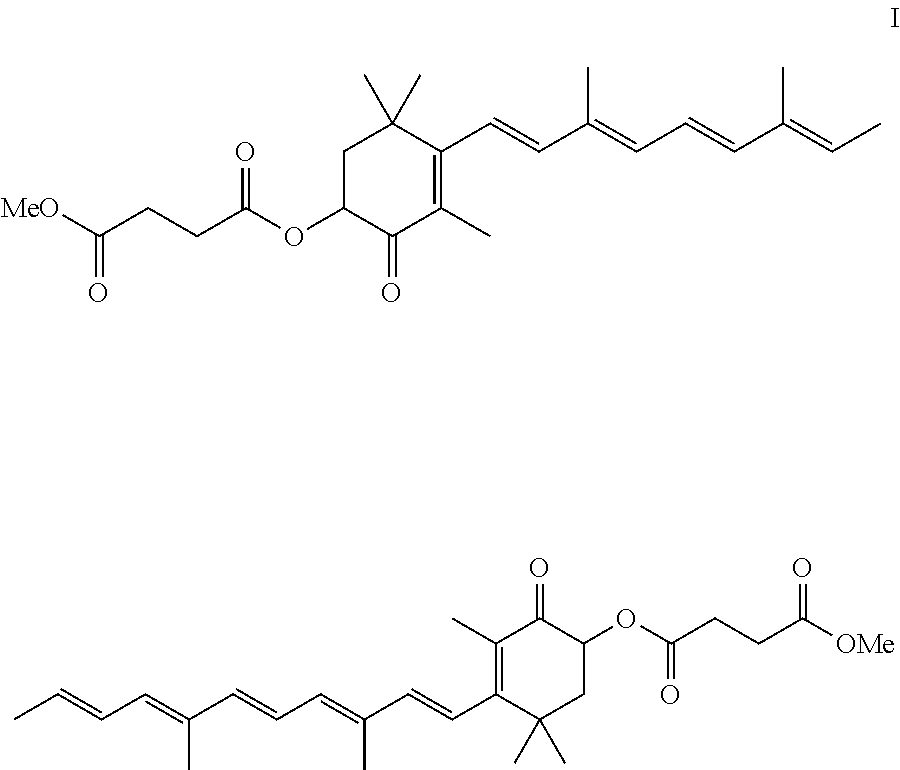Method for producing astaxanthin dimethyldisuccinate
- Summary
- Abstract
- Description
- Claims
- Application Information
AI Technical Summary
Benefits of technology
Problems solved by technology
Method used
Image
Examples
example 1
[0078]The crude astaxanthin solution was produced by reacting II with III in dichloromethane using methanolic sodium methoxide solution (cf. Helv. Chim. Acta 64, 7, 2445 (1981)). The solution comprised 4.56% by weight of astaxanthin (HPLC analysis) and 0.8% by weight of methanol (GC analysis) and also 0.55% by weight of water (Karl-Fischer titration).
[0079]982 g of this solution (equivalent to 75 mmol of astaxanthin) were charged. At atmospheric pressure, 350 ml of solvent were distilled off over a Normag column head. The aqueous upper phase of the distillate was separated off and the lower phase was washed with 175 g of water. The phases were separated and the organic lower phase was recirculated to the distillation bottom.
[0080]This procedure was repeated further twice. Subsequently, 350 ml of solvent were distilled off at atmospheric pressure. The remaining distillation residue no longer comprised methanol. The water content was 0.051% by weight.
[0081]At 20° C., 21.36 g (270 mmol...
PUM
| Property | Measurement | Unit |
|---|---|---|
| Temperature | aaaaa | aaaaa |
| Temperature | aaaaa | aaaaa |
| Temperature | aaaaa | aaaaa |
Abstract
Description
Claims
Application Information
 Login to View More
Login to View More - R&D
- Intellectual Property
- Life Sciences
- Materials
- Tech Scout
- Unparalleled Data Quality
- Higher Quality Content
- 60% Fewer Hallucinations
Browse by: Latest US Patents, China's latest patents, Technical Efficacy Thesaurus, Application Domain, Technology Topic, Popular Technical Reports.
© 2025 PatSnap. All rights reserved.Legal|Privacy policy|Modern Slavery Act Transparency Statement|Sitemap|About US| Contact US: help@patsnap.com



